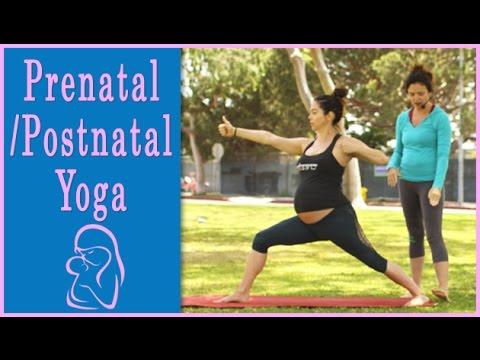Pregnancy is a remarkable journey that brings with it a host of physical and emotional changes. As your body adapts to nurture new life, maintaining strength and stability becomes increasingly important. One of the key areas to focus on is your core, which supports not only your growing belly but also your overall well-being. Strengthening your core during pregnancy can help alleviate back pain, improve posture, and prepare your body for labor and recovery. In this article, we will explore safe and effective exercises tailored to the unique needs of expectant mothers, offering guidance and reassurance as you embark on this transformative path. Whether you’re a fitness enthusiast or new to exercise, our empathetic approach ensures that you feel supported every step of the way, empowering you to embrace the changes with confidence and care.
Choosing Safe and Effective Core Exercises for Expectant Mothers
Embarking on the journey of motherhood is a beautiful experience, and maintaining a strong core can help ease the physical demands of pregnancy. Selecting the right exercises is crucial to ensure both safety and effectiveness. Here are some gentle yet impactful exercises to consider:
- Pelvic Tilts: This exercise strengthens the lower back and core without straining the belly. Stand with your back against a wall, gently tilt your pelvis forward, and hold for a few seconds before releasing.
- Cat-Cow Stretch: This yoga-inspired move helps in relieving back tension and improving flexibility. On all fours, alternate between arching your back (cat) and dropping your belly towards the floor (cow).
- Side-Lying Leg Lifts: Lying on your side, lift your top leg slowly to work on your obliques and hips. This exercise is excellent for maintaining balance and stability.
| Exercise | Benefits | Recommended Sets |
|---|---|---|
| Pelvic Tilts | Strengthens lower back and core | 3 sets of 10 reps |
| Cat-Cow Stretch | Improves flexibility and relieves tension | 5 sets of 5 breaths |
| Side-Lying Leg Lifts | Enhances balance and stability | 2 sets of 12 reps per side |
Remember, it’s essential to listen to your body and consult with your healthcare provider before starting any new exercise regimen. With these safe and effective exercises, you can nurture your body’s strength while embracing the incredible journey of pregnancy.

Understanding the Benefits of a Strong Core for Pregnancy and Delivery
Developing a strong core during pregnancy is more than just about aesthetics; it plays a vital role in supporting your body through the transformative journey of pregnancy and childbirth. A robust core can help alleviate back pain, improve posture, and enhance your balance as your body changes. Moreover, it can contribute to a smoother delivery process by aiding in effective pushing during labor.
- Improved Balance: As your belly grows, your center of gravity shifts. A strong core helps maintain balance, reducing the risk of falls.
- Reduced Back Pain: By supporting the spine, a strong core can significantly alleviate lower back pain, a common complaint during pregnancy.
- Enhanced Recovery: Postpartum recovery can be expedited with a well-conditioned core, as it aids in regaining pre-pregnancy strength and posture.
| Core Exercise | Benefit |
|---|---|
| Pelvic Tilts | Strengthen abdominal muscles and relieve lower back pain. |
| Seated Ball Stability Hold | Enhances balance and engages deep core muscles. |
| Cat-Cow Stretch | Increases flexibility and alleviates back tension. |
Adapting Your Core Workout Routine to Each Trimester
Pregnancy is a unique journey, and your body goes through many changes during each trimester. Tailoring your core workout routine to fit these changes can help maintain strength and stability, supporting both your body and your growing baby.
First Trimester: At this stage, you might feel energetic but remember to prioritize safety. Focus on exercises that enhance core stability without overexertion. Consider incorporating:
- Modified Planks: Maintain a straight line from shoulders to knees.
- Pelvic Tilts: Strengthen your lower back and abdominals gently.
- Seated Knee Lifts: Engage your lower abs while seated comfortably.
Second Trimester: As your belly grows, balance becomes crucial. Opt for exercises that support your posture and core strength. Recommended activities include:
- Side-Lying Leg Lifts: Work on oblique muscles safely.
- Standing Abdominal Bracing: Support your spine and improve posture.
- Cat-Cow Stretches: Alleviate back tension and improve flexibility.
Third Trimester: With limited mobility, focus on gentle movements and avoid lying flat on your back. Emphasize comfort and safety with exercises such as:
- Wall Sits: Strengthen your legs and core with added support.
- Bird Dog: Enhance balance and coordination without strain.
- Deep Breathing Exercises: Engage your diaphragm and support relaxation.
| Trimester | Focus | Key Exercise |
|---|---|---|
| First | Core Stability | Modified Planks |
| Second | Posture & Balance | Side-Lying Leg Lifts |
| Third | Gentle Movements | Wall Sits |

Listening to Your Body: Knowing When to Modify or Rest
Pregnancy is a unique journey that requires you to tune into your body’s signals. Your body is undergoing a series of changes, and it’s crucial to know when to adjust your core-strengthening exercises or take a break. Listening to your body is key to maintaining a safe and effective workout routine.
Here are some signs that you might need to modify your exercise routine or rest:
- Discomfort or pain: If you experience sharp pain or significant discomfort during any exercise, stop immediately and consult with a healthcare provider.
- Dizziness or shortness of breath: Feeling lightheaded or excessively breathless can be a sign to pause and rest.
- Fatigue: While some tiredness is normal, extreme fatigue is a cue to take it easy.
- Swelling or unusual symptoms: Be mindful of any new or unusual symptoms, and seek medical advice if needed.
| Symptom | Action |
|---|---|
| Muscle Strain | Apply ice and rest. Modify exercises to reduce strain. |
| Heart Palpitations | Stop exercising and consult your healthcare provider. |
| Unusual Fatigue | Reduce intensity or take a day off to recover. |
Remember, your body is your best guide. Adjusting your routine and allowing for rest days is not only okay but essential for both your health and your baby’s well-being. Embrace these changes as a part of your journey to motherhood.








































